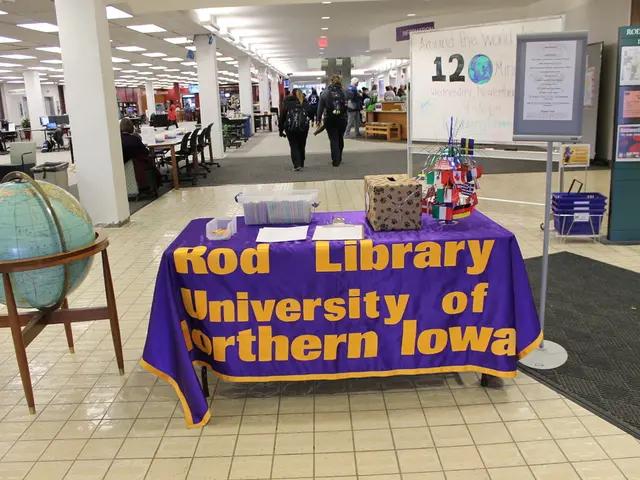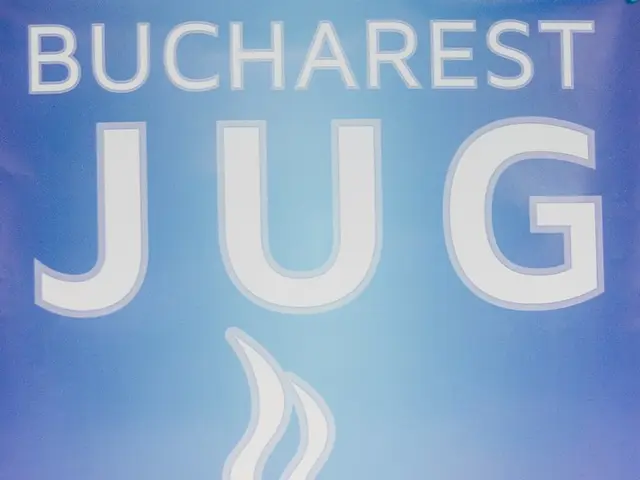"Investigation delves into speculated romantic connection between Eleanor Roosevelt and journalist Lorena Hickok"
Lorena Hickok, a groundbreaking journalist, commenced her career as a reporter in 1912, at a time when only approximately one woman in five in the United States held a job outside the home, and women's right to vote was yet unrealized. This career would eventually introduce Hickok to the individual who would drastically alter her professional and personal life: Eleanor Roosevelt.
In her new biography, "Hick," author Sarah Miller delves into Hickok's impoverished Midwestern origins, her distinguished professional journey in major American cities, and the relationship that would become synonymous with Hickok's legacy.
Miller was prompted to pen a narrative about Hickok and Roosevelt following the discrepancies in accounts regarding the nature of their decades-long relationship. The women exchanged letters frequently, from 1932 until Roosevelt's demise in 1962. Hickok donated thousands of these letters to the Franklin D. Roosevelt Library in Hyde Park, New York, and they were made publicly accessible a decade after her passing in 1978. Their 30-year correspondence offered remarkable insights into their relationship; however, the interpretations of these letters by subsequent authors varied extensively — ranging from a purely platonic relationship to an intensely romantic one.
"You read all those things, and if you're like me, you think, 'OK, but who is right? What was this relationship, really?' The best approach, I believe, is to read the letters for yourself," Miller explained.
In the course of researching "Hick," which will release on Tuesday, Miller read approximately 3,500 letters between the two women. Her assessment borders on the romantic side of the spectrum, although it is rooted in a deep friendship.
"They loved each other. They were physically affectionate with each other. It was a romance, no doubt. Whether there was sexual intimacy involved is uncertain," Miller said. "It's difficult to maintain objectivity, but there's no question that they were lifelong, profoundly intimate friends, and I believe that friendship forms the foundation of their relationship."
On March 5, 1933, the day after her husband's first inauguration, Roosevelt penned a letter to Hickok: "Hick my dearest, I cannot sleep tonight without a word to you. I felt a little as though a part of me was leaving tonight. You have grown so much to be a part of my life that it is empty without you, even though I am busy every minute."
The following day, Roosevelt wrote, "I can't kiss you so I kiss your picture goodnight & good morning." Another letter from that week mentions the sapphire-and-diamond ring Hickok had given her and states, "Your ring is a great comfort. I look at it and think, she does love me, or I wouldn't be wearing it!"
The women seem to have concealed the extent of their closeness from others, including communicating their affection in French. In a 1933 letter, Roosevelt, referring to her teenage son, writes: "Hick darling, Oh! how good it was to hear your voice, it was so inadequate to try and tell you what it meant, Jimmy was near and I couldn't say 'I love you and I adore you' as I longed to do, but always remember I am saying it and that I go to sleep thinking of you and repeating our little saying."
Although most historians agree that Hickok was only romantically interested in women, some caution against interpreting her correspondence with Roosevelt through a modern lens. In her Pulitzer Prize-winning 1994 book, "No Ordinary Time," historian Doris Kearns Goodwin acknowledges the "emotional intensity" of their letters but appears skeptical that they had more than an deeply intimate friendship, noting that one study has shown women of Roosevelt's era used romantic and even sensual language to communicate with female friends.
Nonetheless, history has a propensity for "straight-washing" same-sex relationships from the past. This practice has even spawned a widely circulated internet joke: "And historians will say they were just good friends."
In the biography "Hick," author Sarah Miller sheds light on Lorena Hickok's professional and personal life, including her relationships, particularly with Eleanor Roosevelt. Throughout their 30-year correspondence, the women shared a deep friendship and displayed signs of a romantic relationship, such as exchanging affectionate letters and gifts, and conveying their feelings in French to keep their closeness hidden from others. Despite some historians questioning the nature of their relationship due to the context of the time, discussions surrounding same-sex relationships from the past often fall victim to "straight-washing."








